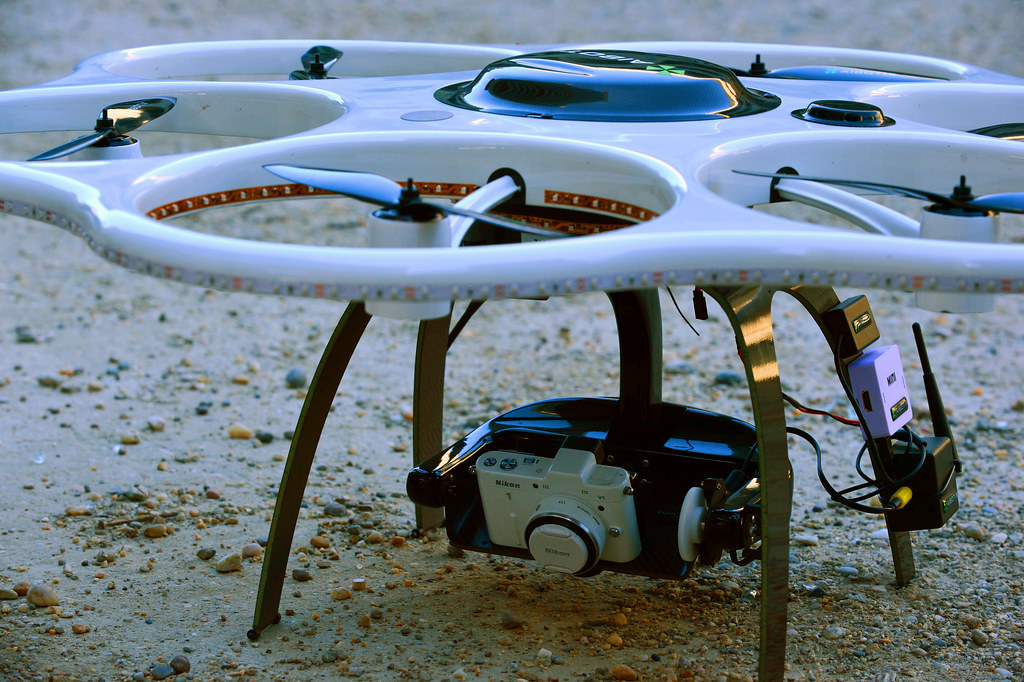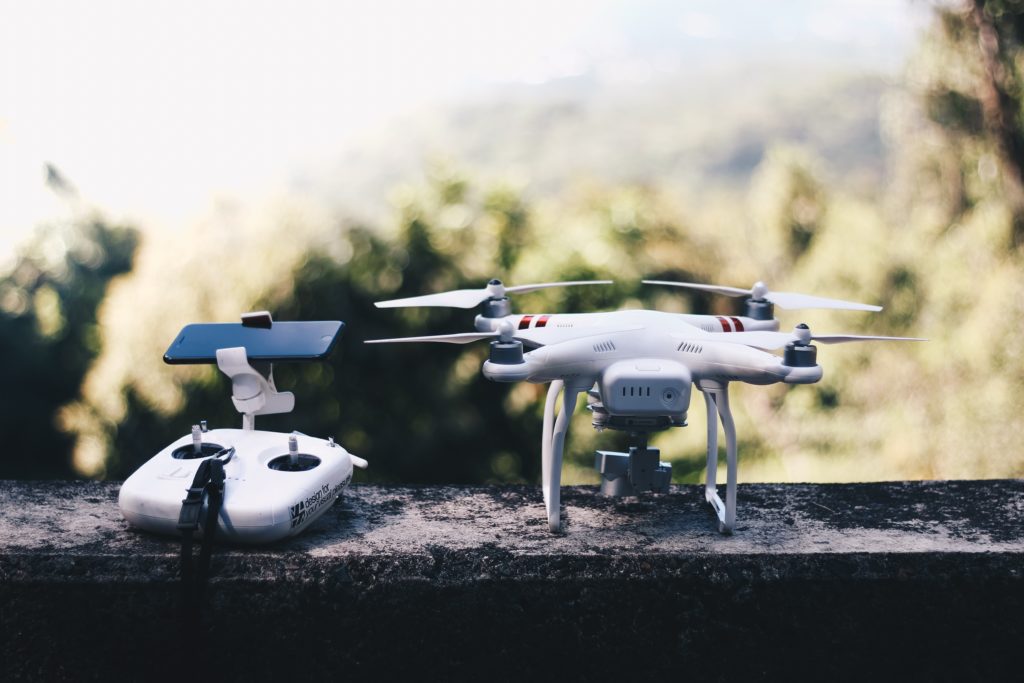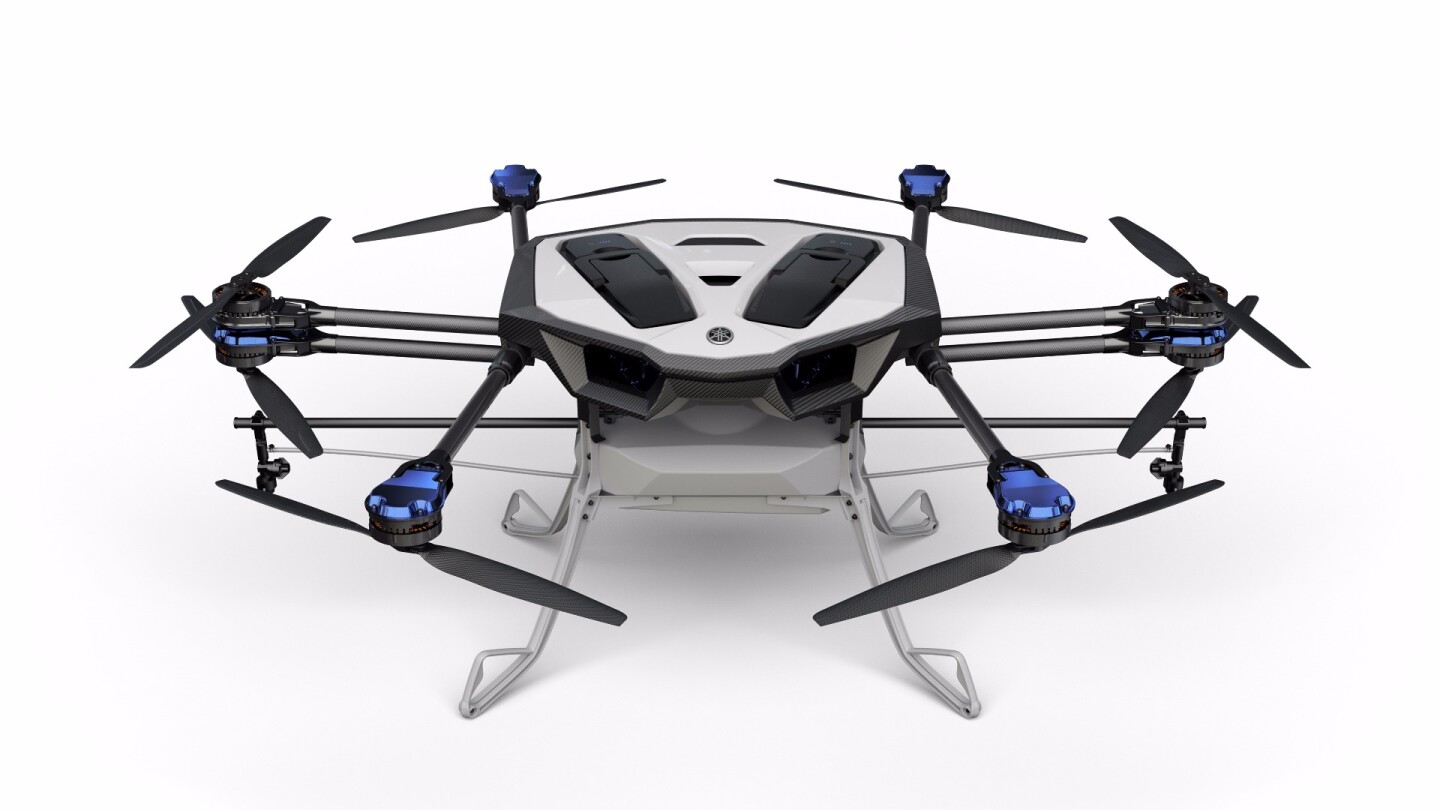
A Bio-hybrid drone was used with an Electroantenogram device (EAG). To create a drone capable of detecting odors, The device is equipped with a tilt sensor and the flight controller sets the drone at an angle of 270 degrees to the odor source. We then used a spiral-surge algorithm to find the maximum concentration of the odor. The drone flew toward the odor source to record and collect data.
Bio-hybrid drone
A bio-hybrid drone equipped with a sensor is required to detect airborne volatile chemicals. A bio-hybrid drone equipped with an antenna capable of detecting chemical plumes has an advantage over existing robotic systems in that it can detect both the chemical sources and their location. Its odorant detection antenna, shown in Figure 4B detects a wide array of chemicals. Bio-hybrid drones with these sensors are not only safer to fly, but also provide an excellent proof of concept for localization of odor sources and chemicals.
Electroantennogram (EAG) device
EAG recording is complex science. A drone equipped to collect data is no exception. There are many noise sources, including biological noise, interference from external sources, and drifting signal levels. Common is to use a reference chemical, which can evoke a reasonable EAG reaction. This signal can also be used to normalize data. Conventional EAG devices use glass pipette-electrodes. However, the latest design incorporates an electrically conductive jelly to replace the wires. This device incorporates a first amplifier to reduce the noise.

Tilt sensor
A drone with tilt sensor provides input to the flight control system. This sensor is crucial in applications that require stability. A drone equipped with a tilt sensors combines accelerometers and GPS to detect subtle movements. This technology can also be used on other types of moving objects, such as cars. Here's how it works. Trigonometry formulas allow you to calculate tilt angles for drones.
Algorithm for odor source localization using convolutional neural networks
Convolutional neural network algorithm to odor-source location for a drone and sensor reports on the first step in using this method. This method relies on information-driven principles to speed up the identification of the source parameters and outperform systematic sampling. Shannon's law of entropy emphasizes how important information is in the search process. This leads to an information-driven strategy for planning a path. It replaces the conventional binary sensing method, which assumes that there is a fixed distribution. In addition to increasing the probability of detection, it models the odor encounters in a given position using a Poisson distribution.
Comparison of small drones using gas/biosensors
Research efforts are shifting to the development of odorant biosensors as drones become more popular for environmental monitoring. Drones, which are affordable aerial vehicles, can be used for environmental monitoring. They can also identify odors. It has been a challenge to create an autonomous drone equipped a biosensor for odorant detection. There have been numerous papers that explored the feasibility using small drones to monitor this, including one from J. McGlone, J. Paneque-Galvez or others.

FAQ
What US states do drones are legal in?
A drone can be legally operated for recreational purposes. The Federal Aviation Administration (FAA), has established guidelines that allow the use of small unmanned aircraft systems (UASs). These UASs have to be registered with FAA before they are allowed to fly. The FAA also allows commercial operators to fly these devices if certain conditions are met.
How do you travel with a drone?
Drones are becoming more and more popular for personal and professional use. They are used to film, fly, map, rescue and search and rescue. The FAA has recently approved several new drone regulations, which include requirements for registration, licensing, pilot training, and insurance. These changes will help ensure that drones stay safe for all.
How can I keep drones off my property?
Drones are becoming more popular for home security and surveillance. You can prevent drone attacks by installing motion sensors around your home and using them to detect any unauthorised flying objects.
Can my drone be flown indoors?
Yes, you can fly your drone indoors. It is important to make sure there are no hazards or obstacles in your home. For instance, avoid flying near windows and doors, heating vents, heating units, air conditioning units, electrical outlets or water pipes.
Statistics
- According to industry research from ZipRecruiter , there are 10 cities where the typical salary for a Drone Pilot job is above the national average. (dronesgator.com)
- Research and Markets predict a growth rate of 51.1% over the next five years. (thedroneu.com)
- According to ZipRecruiter, the minimum hourly wage of drone pilots is $20. (thedroneu.com)
External Links
How To
How To Film Yourself With A Drone
You can easily film yourself with a drone. You just need a camera, a remote controller, and a smartphone. You should first get your FAA (Federal Aviation Administration), license. The next step is to purchase a Quadcopter. This type of drone comes with four rotors, allowing it fly in multiple directions.
Once you have purchased your drone, you will need to connect it via a USB Cable to your computer. Open the software program on your drone. Follow these steps:
-
Connect the drone's batteries to the power supply of your laptop.
-
Make sure your drone's webcam is open and working properly. If you don’t see any images on the screen check that there are no problems with the connection between your drone to the computer.
-
Turn on Wi Fi and type the IP address from your computer in the field "IP Address".
-
Select the "Camera" option and then select "Open Camera."
-
Make sure that the image quality is set to HD 1080p.
-
Click on "Record", then click "Start recording."
-
Close the webcam app after you are done recording.
-
Save the video file on your hard drive.
-
Last, upload the video file to YouTube from another computer.
-
Share your video link to social media sites like Facebook, Twitter, Instagram and Google+.